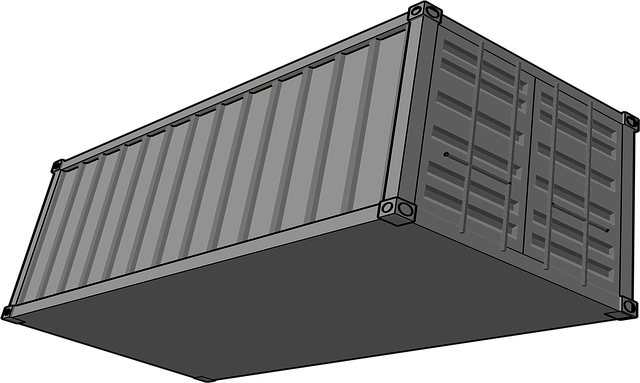Looking to register your car in California? This comprehensive guide breaks down the process, from understanding key requirements to avoiding common mistakes. We’ll walk you through gathering essential documents and verifying your vehicle’s crucial VIN (vehicle identification number). Learn how to navigate the step-by-step registration process efficiently. Discover best practices and tools like a VIN verifier to ensure a smooth experience.
- Understanding California Car Registration Requirements
- Gather Necessary Documents for Vehicle Registration
- How to Verify a Vehicle's VIN (Vehicle Identification Number)
- Step-by-Step Guide to Registering Your Car in CA
- Common Mistakes to Avoid During Car Registration
Understanding California Car Registration Requirements

Understanding California Car Registration Requirements
In California, car registration is a legal mandate for all vehicle owners. It involves several key steps and crucial documents to ensure your vehicle complies with state regulations. The process begins with gathering essential paperwork, including proof of ownership, a valid driver’s license, and a completed registration application. Additionally, every vehicle in California must undergo a thorough inspection to verify its safety and emissions standards. This is where a VIN (Vehicle Identification Number) verifier comes into play. Using tools like mobile VIN inspection services, you can conveniently confirm your car’s history and ensure it meets the necessary criteria before final registration.
California’s Department of Motor Vehicles (DMV) oversees the registration process, setting specific guidelines for vehicle eligibility and documentation. One of the critical requirements is a valid and up-to-date VIN. A mobile VIN verification service can help owners confirm their car’s identity by checking its history, previous owners, and any reported incidents, ensuring a seamless and legitimate registration experience.
Gather Necessary Documents for Vehicle Registration

Before you start the registration process, it’s crucial to gather all the essential documents required by the California Department of Motor Vehicles (DMV). This includes your vehicle’s Registration Application form, which can be obtained online or in person from any DMV field office. Additionally, you’ll need proof of insurance, a valid driver’s license, and the Vehicle Identification Number (VIN) verifier certificate—a crucial document that verifies your car’s history and ensures it meets safety standards.
A mobile VIN verification service can streamline this process, allowing you to quickly and conveniently obtain the necessary certification. This involves a simple inspection where a specialized tool reads and confirms the vehicle’s unique VIN code. Once you have these documents ready, you’re one step closer to legally registering your car in California.
How to Verify a Vehicle's VIN (Vehicle Identification Number)

Verifying a Vehicle’s VIN (Vehicle Identification Number) is a crucial step in the car registration process in California. The VIN acts as a unique identifier for your vehicle, ensuring that all parts and records are correctly associated. To check the VIN, you can either look at the label on your vehicle’s dashboard or find it in the owner’s manual. However, for convenience, many opt for a mobile VIN verification service. These services allow you to use your smartphone to input the VIN and instantly receive validation, including important details like the make, model, year, and even historical ownership data.
A mobile VIN verifier can also perform a more in-depth inspection by cross-referencing the number with national databases. This is particularly useful when buying or selling a car, as it ensures the vehicle’s history is clear and helps prevent fraud. With just a few taps on your phone, you can gain peace of mind knowing that the VIN matches the vehicle accurately, simplifying the registration process in California.
Step-by-Step Guide to Registering Your Car in CA

Registering a car in California involves several straightforward steps. First, gather all necessary documents, including your vehicle’s registration certificate (if from another state), proof of insurance, and a completed CA Form 137850. Next, visit a local Department of Motor Vehicles (DMV) office or use the online services for a vin inspection. This process verifies your vehicle’s VIN (Vehicle Identification Number) to ensure it’s not stolen or has any outstanding issues.
After passing the vin inspection, you’ll need to pay the registration fees. These can be paid in-person at the DMV or through an online portal using a mobile vin verification service. Once all payments are cleared, you’ll receive your new California vehicle registration, which is typically valid for one year and needs to be renewed annually.
Common Mistakes to Avoid During Car Registration

When registering your car in California, it’s crucial to avoid common mistakes that can delay or even prevent the process from completing smoothly. One frequent blunder is failing to verify the Vehicle Identification Number (VIN). This unique code is like a fingerprint for your vehicle and is essential for accurate registration. Always use a reliable VIN verifier, whether it’s a desktop tool or a mobile vin verifier app, to ensure the number is correct and matches the car you own.
Another mistake to steer clear of is not gathering all necessary documents ahead of time. The California Department of Motor Vehicles (DMV) requires specific paperwork, including proof of insurance, registration from the previous state (if applicable), and sometimes even a title. Neglecting any of these can cause significant delays. Consider utilizing mobile vin verification services that can also assist with document preparation to streamline the entire car registration process in California.
Registering a car in California is a straightforward process once you understand the requirements and gather the necessary documents. By following our step-by-step guide, using a reliable VIN verifier to confirm your vehicle’s identity, and avoiding common mistakes, you can ensure a smooth registration experience. Remember, a valid car registration not only ensures compliance with state laws but also contributes to safer roads for all California drivers.



